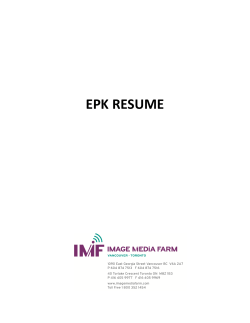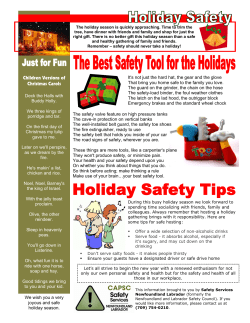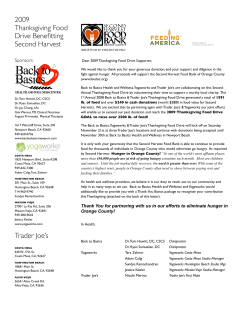
N B T
NEBRASKA BOBCAT TAGGING REPORT 2011/2012 SEASON Sam Wilson Nebraska Game and Parks Commission May 22, 2012 Season: The 2011/2012 bobcat season opened on December 1, 2011 and closed on February 29, 2012. In 2002, the season ending had been extended from February 15 to the last day in February. With 383 more bobcats than the previous season’s harvest, this is the highest harvest on record and the eleventh consecutive harvest total over 700 since the dramatic rise in the late 1990’s. Bobcats: A record high of 1,913 bobcats were tagged during the 2011/2012 season (compared with 1,530 in 2010/2011). Of these, trappers and hunters harvested 1,873 bobcats, 40 bobcats were killed by vehicles. Forty-seven percent of bobcats with known gender harvested during the 2011/2012 season were females. Bobcat Take by Type of Trap 2011/2012 SNARE 37% CAGE TRAP 5% BODY GRIP 4% FOOTHOLD 54% The bobcat harvest density per square mile was highest in the south-central and southeastern counties of the state, followed by the central and north-central region. The three counties with the highest harvest densities were Franklin (16 bobcats per 100 miles²), Nemaha (12 bobcats per 100 miles²) and Harlan (11 bobcats per 100 miles²). The three counties with the highest total bobcat harvest were Custer (163), Frontier (102) and Lincoln (97). Conclusion: Harvesters: Trappers harvested more bobcats than hunters did (1,472 vs. 401), and trappers also indicated a greater proportion of bobcats taken specifically. 3.7 times as many bobcats were harvested by trapping as by hunting. The highest number of bobcats taken by one individual was 33 (all trapped). Historically, bobcat pelts have been one of the most valuable of Nebraska’s wild pelts. Decreases in bobcat pelt prices, sustained high gas prices, and severe weather conditions during the 2009/2010 season may have caused a decrease in harvest participation and harvest effort for that year. Weather conditions improved for the following seasons and harvest effort likely returned to previous levels. Bobcat pelt prices increased 155% and bobcat harvest rose 25% compared to the previous season. While at this time there is no indication that the harvest negatively impacts bobcat populations in Nebraska, a shortening of the season and/or the implementation of bag limits will be considered if, despite high harvest participation and high pelt prices, a substantial and persistent drop in total harvest occurs in coming years. Pelts: Preliminary data from the 2011/2012 fur buyer survey indicate that the average price for bobcat pelts paid by fur buyers in Nebraska was $186.29. This represents a 155% increase compared with an average of $72.97 in 2010/2011. Bobcat pelts remain the most valuable wild fur harvested in Nebraska. Individual pelt prices are highly variable due to differences in pelt quality and stages of processing at sale. According to fur buyers and harvesters, bobcat pelts are prime from December 1 through the end of the season. Special thanks to all NGPC staff that collected harvest data, tagged bobcats, and enforced regulations during the 2011/2012 bobcat season. Harvest monitoring and status assessment would not be possible without your help. Thanks also to harvesters and fur buyers for providing data used in this analysis.
© Copyright 2025


















